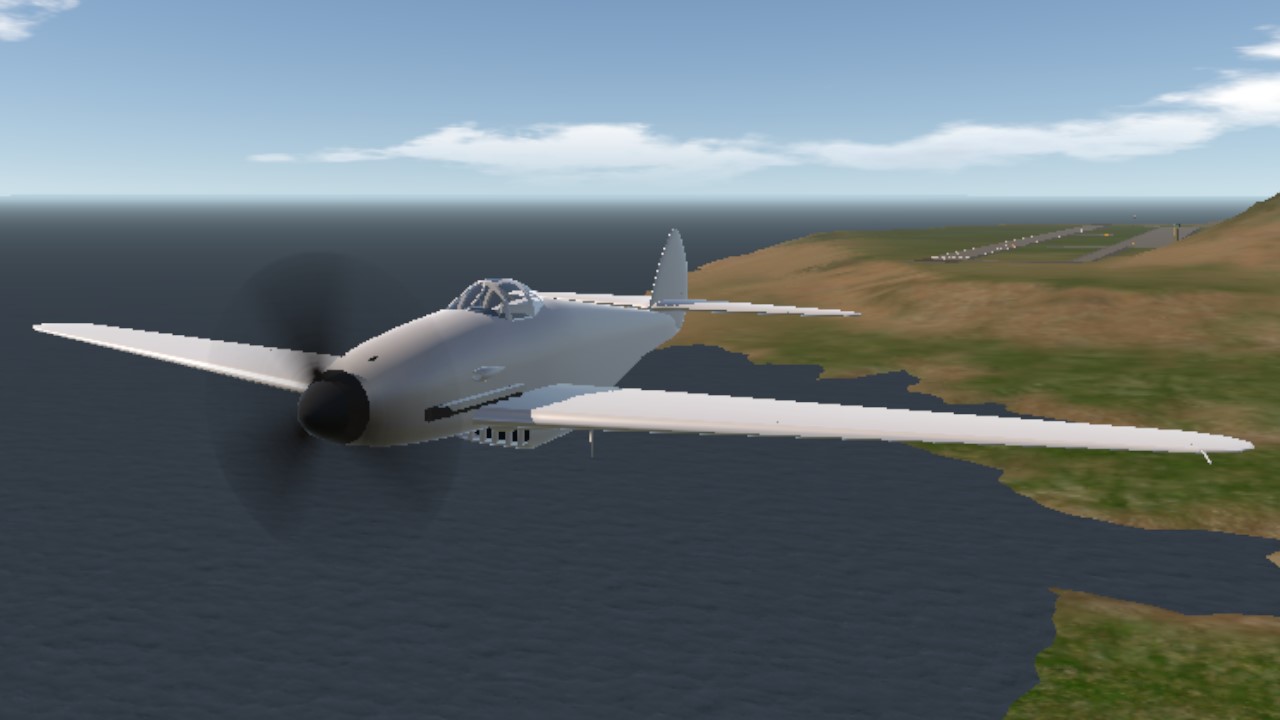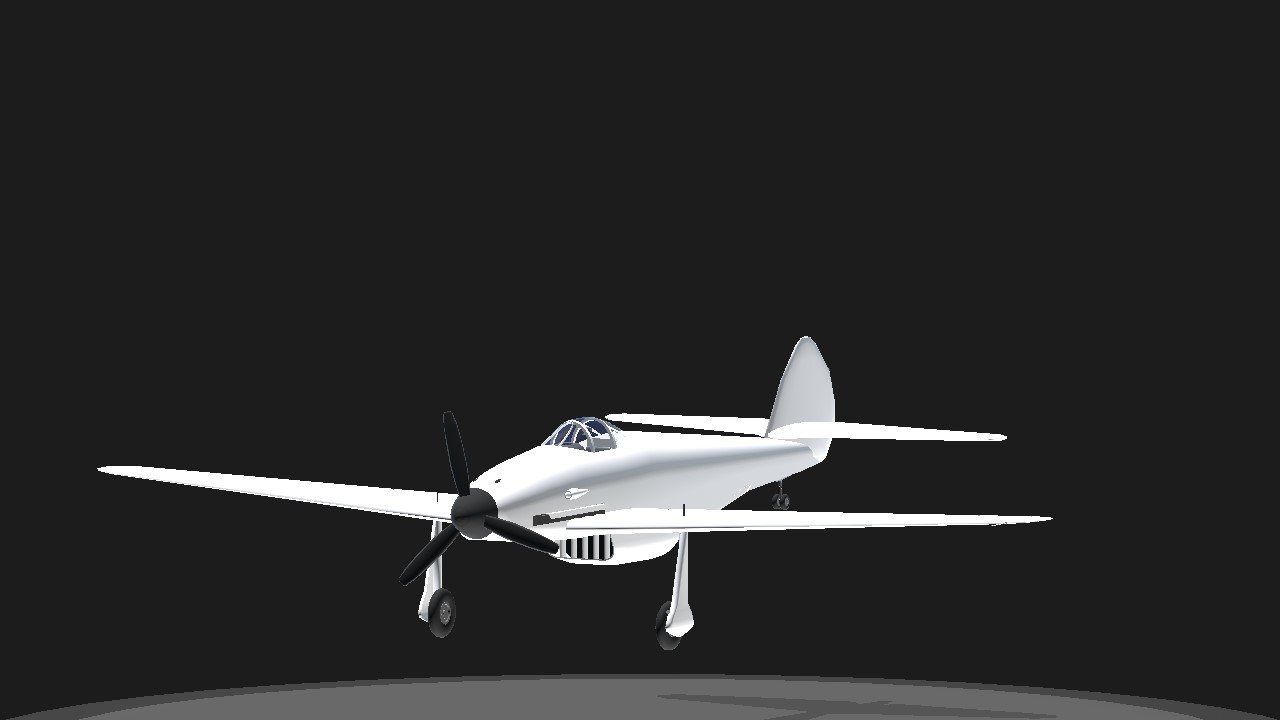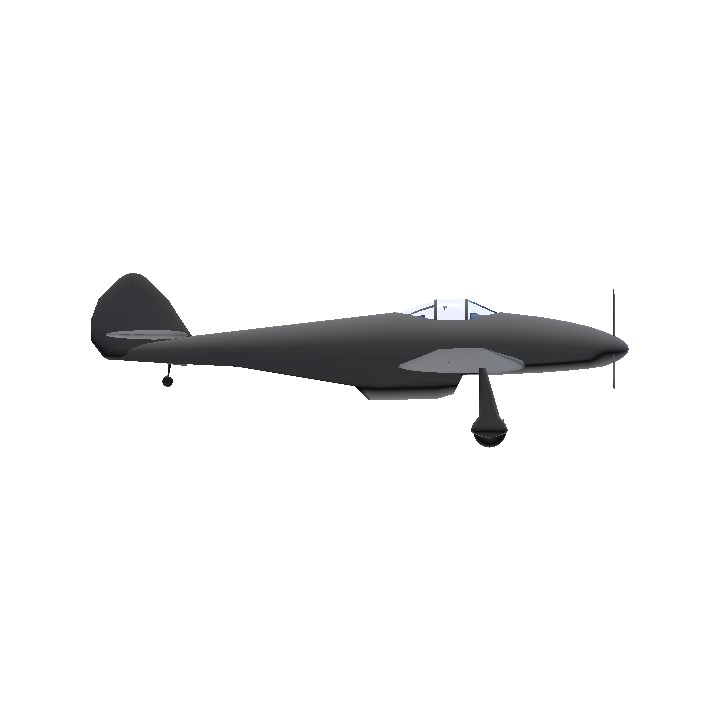Finished Work
Type.109 — High-Altitude Interceptor / Air Superiority Fighter
Entry into Service: 1 October 1943
Role: High-Altitude Interceptor / Air Superiority Fighter
Manufacturer: Sarkuva-Furkust Aviation Works (SFAW)
Engine: NHSV-12, 1,600 hp inverted V12 (naturally aspirated), driving a 3-blade variable-pitch propeller
Armament:
• 2× 13.7mm KtB-13 machine cannons, nose-mounted (900 rds each)
Performance:
• 673 km/h maximum speed
• 9,750 m service ceiling
• Stall Behavior: Tendency for tip stall below IAS 300 km/h, especially in turns
• Climb Rate: Strong below 8,000 m; degrades sharply near ceiling
Design Philosophy
The Type.109 emerged during the chaotic manufacturing crisis of mid-1943, when SFAW needed an airframe that was fast to build, rugged, and capable of operating where enemy bombers felt safest — above 9,000 meters.
Rejecting the sleek, advanced aerodynamic lineage of the Type.106, the engineers designed the 109 around one idea:
“Push raw power into a simple, strong airframe.”
The heart of this philosophy was the NHSV-12, a brutally powerful 1,600 hp inverted V12 with no supercharging. While this meant a predictable loss of power above 9,000 meters, it provided superb reliability and unmatched acceleration at combat altitudes.
Wing Design
The Type.109’s defining feature is its semi-elliptical, low-taper wing with rounded tips. This shape is easy to spot on the real aircraft:
Smooth curved leading edge
Mostly straight trailing edge
Large, rounded outer panels
This planform offered near-elliptical lift efficiency without the manufacturing nightmare of a true elliptical wing.
Benefits:
✔ High lift at altitude
✔ Smooth, predictable stall in level flight
✔ Stable roll behavior at medium and high speeds
Drawback:
✖ The wing’s rounded outer sections caused early airflow separation at low IAS, giving the aircraft its infamous:
“Tip stall below 300.”
Pilots described it as a sudden wing-drop with little warning if they slowed down too much in a turn.
This trait became both the fear and signature of the 109.
In Combat
The Type.109 was deployed primarily for:
High-altitude interception
Energy fighting
Vertical maneuver dominance
Units flying the 109 were trained to exploit its strengths:
Climb aggressively, strike from above, and never let speed bleed off.
The aircraft excelled at fast climbs to 8,000 meters, where its engine still produced excellent power. Above 9,000 m, the lack of supercharger became noticeable, but the airframe’s lift efficiency allowed it to remain controllable where many other fighters struggled.
The twin 13.7mm cannons were accurate and reliable, perfect for shredding reconnaissance aircraft and medium bombers. Against heavy, armored targets, pilots relied on diving attacks to maximize lethality.
Biggest threat in combat?
Not the enemy — but your own airspeed indicator. Fighting below 300 km/h meant flirting with disaster.
Strengths
✔ Exceptional acceleration due to high power and low drag fuselage
✔ Reliable and easy to maintain inverted V12
✔ Smooth high-speed roll and predictable high-altitude handling
✔ Strong vertical energy performance
✔ High lift wing allows sustained control at altitude
Weaknesses
✖ Asymmetric tip stall below IAS 300 km/h
✖ Engine loses power sharply above 9,000 m
✖ Armament inadequate against heavily armored bombers
✖ High drag in steep dives due to wing curvature
✖ Requires strong throttle/prop-pitch discipline
Pilot Reputation
Among pilots, the Type.109 became known as:
“The High-Altitude Hammer” — brutal when fast and above the enemy.
“The Slow-Kill Devil” — terrifying if allowed to drop below safe IAS.
“The Whisper Wing” — a nickname earned from the smooth airflow across its rounded tips.
But the most common pilot saying was:
“In a 109, speed isn’t life —
speed is the only life.”
Those who respected the aircraft’s quirks found it a loyal, deadly high-altitude weapon. Those who ignored its low-speed warnings rarely survived long enough to complain.
Specifications
Spotlights
- Jaspy190 11 hours ago
General Characteristics
- Created On Android
- Wingspan 42.6ft (13.0m)
- Length 31.8ft (9.7m)
- Height 10.3ft (3.1m)
- Empty Weight 5,807lbs (2,634kg)
- Loaded Weight 6,993lbs (3,172kg)
Performance
- Horse Power/Weight Ratio 0.228
- Wing Loading 29.4lbs/ft2 (143.8kg/m2)
- Wing Area 237.5ft2 (22.1m2)
- Drag Points 959
Parts
- Number of Parts 258
- Control Surfaces 7
- Performance Cost 1,182






Criminally underrated